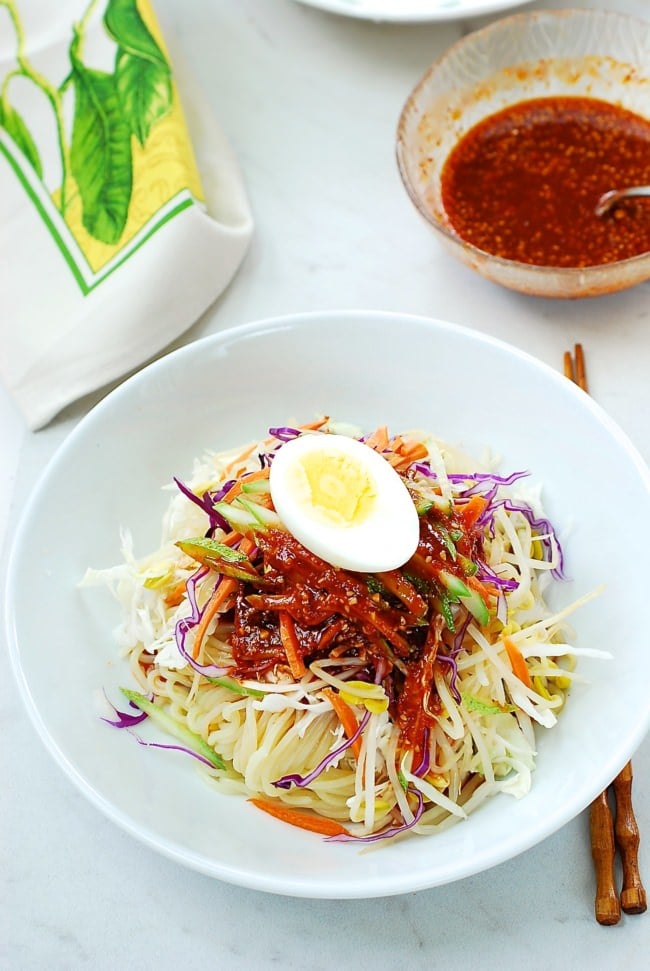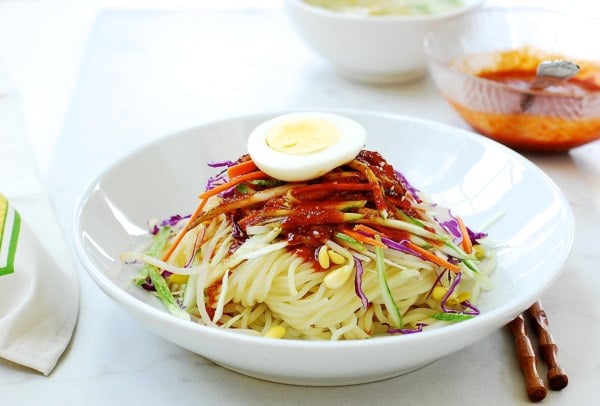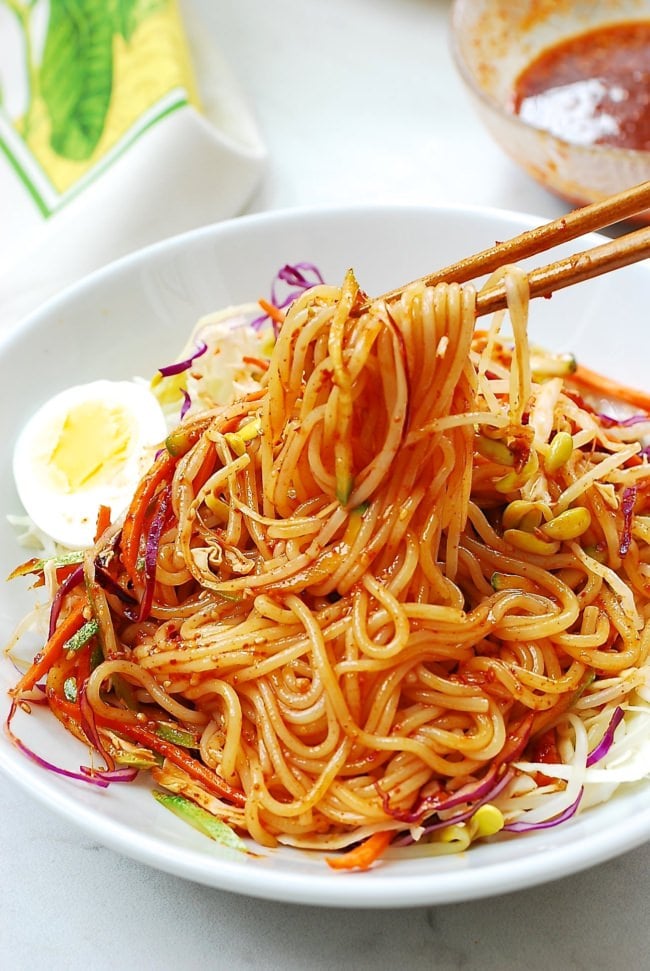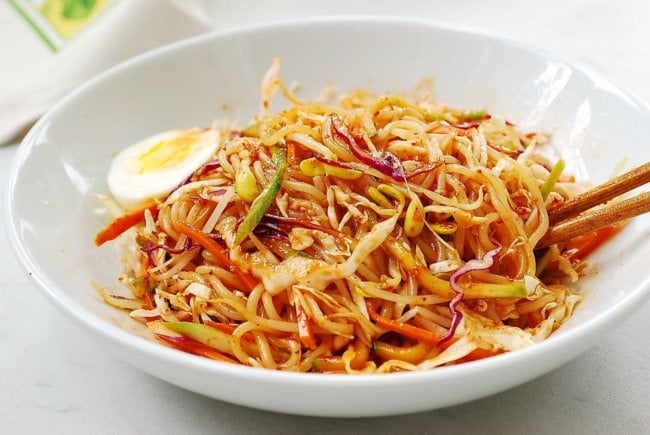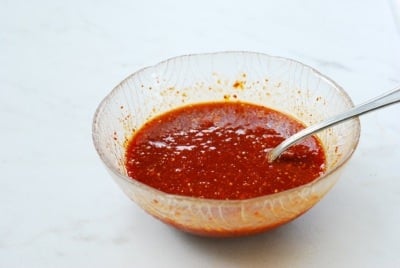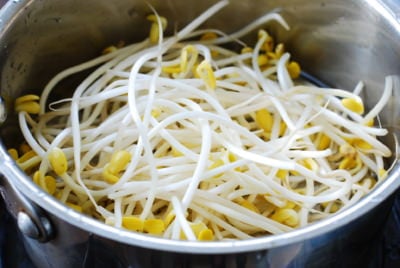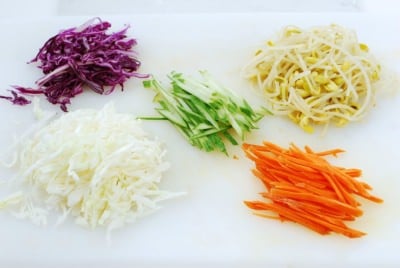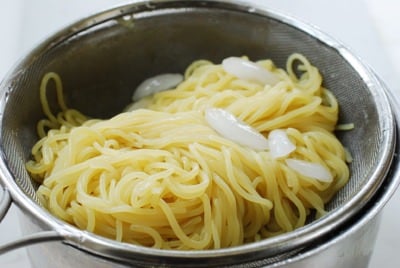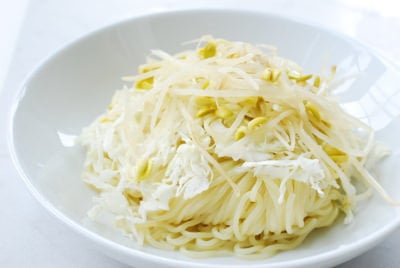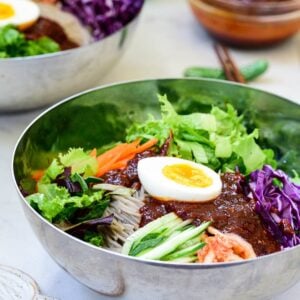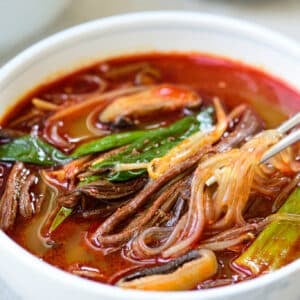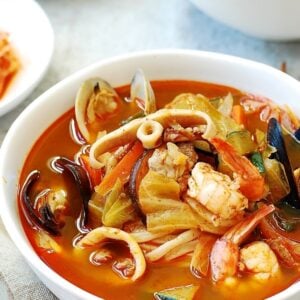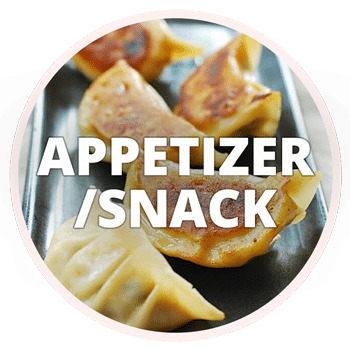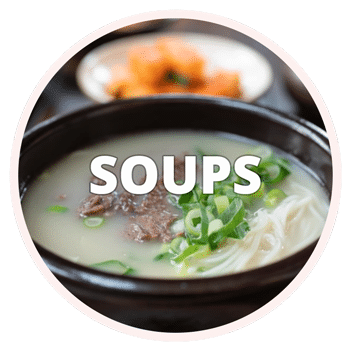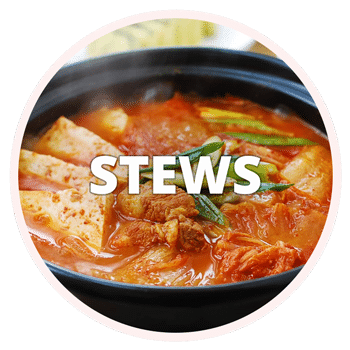We’ve been enjoying various cold noodle dishes all throughout the warm months! The weather has cooled down, but cold noodles are always welcome in my house. I have quite a collection of cold noodle dishes on the blog — naengmyeon, bibim guksu, kimchi bibim guksu, jaengban guksu, and kongguksu, and I hope you’ve tried some of them. If you are a fan of Korean spicy cold noodles, you will love this Jjolmyeon (쫄면) recipe!
Jjolmyeon is a cold noodle dish of chewy noodles in a sweet and tangy gochujang sauce. The word “jjolmyeon” actually means chewy noodles, but it also refers to the dish made with them.
In Korea, jjolmyeon is a common menu item of restaurants that sell street food and light meals such as gimbap (김밥), tteokbokki (떡볶이), ramen (라면), etc. It’s especially popular amongst teens and young adults. Those relatively cheap street food/light meals are called boonsik, and boonsik restaurants are called boonsikjip (분식집), which we all frequented growing up.
The noodles are made from wheat flour and starch, and they are slightly thick, chewy, and bouncy. You can find these noodles either in the refrigerator or frozen section. Some packages include a pouch of a spicy sauce. Those are convenient, but tend to be more expensive. If you’re using this recipe, be sure to buy the noodles only.
Typically, kongnamul (soybean sprouts), green cabbage, carrots, and cucumbers are the vegetables included in this dish. These crunchy vegetables stand up to the chewy noodles quite nicely.
I like to add some tangy/fruity sweetness to the basic ingredients for the sweet and vinegary gochujang sauce. Pineapple juice, Korean green plum syrup (maesilcheong, 매실청), or even lemon soft drinks work well for that purpose. Another trick is to add a generous amount of finely ground sesame seeds for extra nuttiness. Finely ground roasted peanuts would be good too. All these will nicely round up the flavors of the vinegary, spicy sauce!
Pleasantly chewy, bouncy noodles in a sweet and tangy gochujang sauce with lots of fresh, crunchy vegetables – what’s not to like!
For more Korean cooking inspirations, follow along on YouTube, Pinterest, Twitter, Facebook, and Instagram.
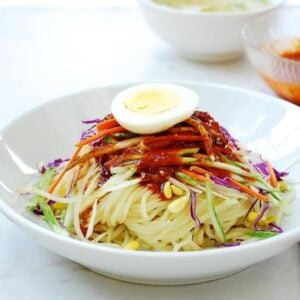
Ingredients
Noodles and Vegetables
- 14 ounces jjolmyeon 쫄면 (refrigerated or frozen)
- 6 ounces kongnamul 콩나물(soybean sprouts),
- 3 ounces green cabbage
- 1 ounce of red cabbage optional
- 1/2 carrot
- 1/2 small cucumber
- 1 hard boiled egg
Sauce
- 1 tablespoon gochugaru 고추가루, (preferably finely ground)
- 2 tablespoons gochujang 고추장
- 1 tablespoon cornsyrup oligodang, 올리고당
- 1 tablespoon sugar
- 2 tablespoons vinegar
- 1 tablespoon soy sauce
- 2 tablespoons pineapple juice or maesilcheong, 매실청, apple juice, or lemon soft drink
- 1 teaspoon minced garlic
- 1 tablespoon sesame seeds preferably finely ground
- pinch salt
- 1 tablespoon sesame oil
Instructions
- Combine all the sauce ingredients in a small bowl, and mix well.
- Bring 2 cups of water to a boil, and add the soybean sprouts. Close the lid, and cook for 3 to 4 minutes. Quickly transfer the sprouts to a bowl of cold water to cool, saving the cooking liquid, which can be used as a soup. (See note.) Drain the sprouts.
- Thinly slice the cabbages, and cut the carrot and cucumber into matchsticks.
- Bring a medium pot of water to a boil. Cook the noodles according to the package instructions (usually about 5 minutes). Drain quickly and rinse in icy cold water until the noodles are very cold. Make two one-serving size mounds. Place the mounds in a colander to drain.
- Place the noodles in the middle of a serving bowl and nicely arrange the cold vegetables over the noodles. The sauce can be served on top or separately. You can also mix the noodles and vegetables with the sauce before serving. Place a half of the boiled egg on top to serve.


